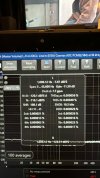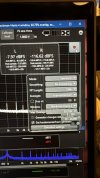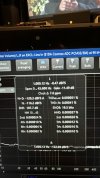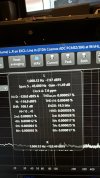So a few (lot of all around the same items) questions and something I’ve encountered
@pma and
@IVX when configuring the e1da in mono how do you set this up? Is it in software somewhere or literally just using both inputs, I’m only measuring with one at the minute, I’ve also remade cables to have the sheild and cold tether at the rca plug rather than the small link I made in the xlr previously
I am using the isolator from olimex also
I was initially trying to use asio with the devices, and despite being able to select different devices for in and out I wasn’t able to get anywhere near the performance shown here, but I was using one input, using Java I can get better noise floor and therefore cleaner measurements (but maybe down to Blackman Harris 4 windowing so I need to revisit this) do you use asio4all in the set up part where you select inputs?
Can you take pictures of the settings in room eq wizard rta that enable you to get the excellent readings as I am 6db off with it connected as a loopback and I am also unable to get anywhere near 0dbfs from the topping (set to 0dbfs output) using a single stereo input to the cosmos, perhaps this is why… I have several xlr plugs and cable for splitters arriving soon
I get two unique readings for input 1 and two when I connect a splitter to both inputs, hence me asking about settings above
I figured out the Blackman Harris 4 and you use 8 averages
I was getting a noise on the signal which would ramp up the noise in the measurements ruining it… it turns out if you use a Lenovo laptop with ssd hard drive when it writes a good amount of data to it it makes some rf or effects grounding and makes noise go +30 or so db from where it should be… I switched off system noises and in the end listened to the other output of the topping to see if it was some kind of warning, it was very strange, and not until I watched the hard drive write speed pick up and coincide with the ‘noise’ that I worked out I needed to put the e1da and topping 18” away from the laptop and I could measure as normal once more
I also have an amplifier rig I was using with a Scarlett audio interface for larger voltages
It has a similar layout to your setup, but also a pair of 10uf foil caps on the input, unsure why these are required but it works and let me measure several car audio amplifiers
The e1da is for measuring dsp’s and the like as I have nothing bar one amp that came close to ruling out the use of the Scarlett
I have also measured some ‘very bad’ imo amps that shouldn’t be so bad for their cost, one is a rare class A that I suspect isn’t class A up to 30watts as they say and just has harmonics sprayed everywhere when measured over 0.5-1watt, very strange! But maybe down to my rig perhaps
I also have some very good measuring amps from a few manufacturers I expected to be decent…
Various attachments are attached with settings and measurements I’ve been able to acheive
Any help given is welcomed!





